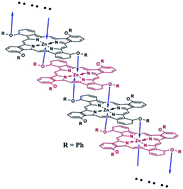Fluorescent and triplet state photoactive J-type phthalocyanine nano assemblies: controlled formation and photosensitizing properties
Abstract
Cofacial J type nano aggregates, which are both fluorescent and triplet state photoactive, were formed in

* Corresponding authors
a
Chemistry Department, Hebei Normal University of Science and Technology, Qinghuangdao, Hebei Province, China
E-mail:
zhangxianfu@tsinghua.org.cn
Fax: +86 3352039067
Tel: +86 3352039067
Cofacial J type nano aggregates, which are both fluorescent and triplet state photoactive, were formed in

 Please wait while we load your content...
Something went wrong. Try again?
Please wait while we load your content...
Something went wrong. Try again?
X. Zhang, Q. Xi and J. Zhao, J. Mater. Chem., 2010, 20, 6726 DOI: 10.1039/C0JM00695E
To request permission to reproduce material from this article, please go to the Copyright Clearance Center request page.
If you are an author contributing to an RSC publication, you do not need to request permission provided correct acknowledgement is given.
If you are the author of this article, you do not need to request permission to reproduce figures and diagrams provided correct acknowledgement is given. If you want to reproduce the whole article in a third-party publication (excluding your thesis/dissertation for which permission is not required) please go to the Copyright Clearance Center request page.
Read more about how to correctly acknowledge RSC content.
 Fetching data from CrossRef.
Fetching data from CrossRef.
This may take some time to load.
Loading related content
